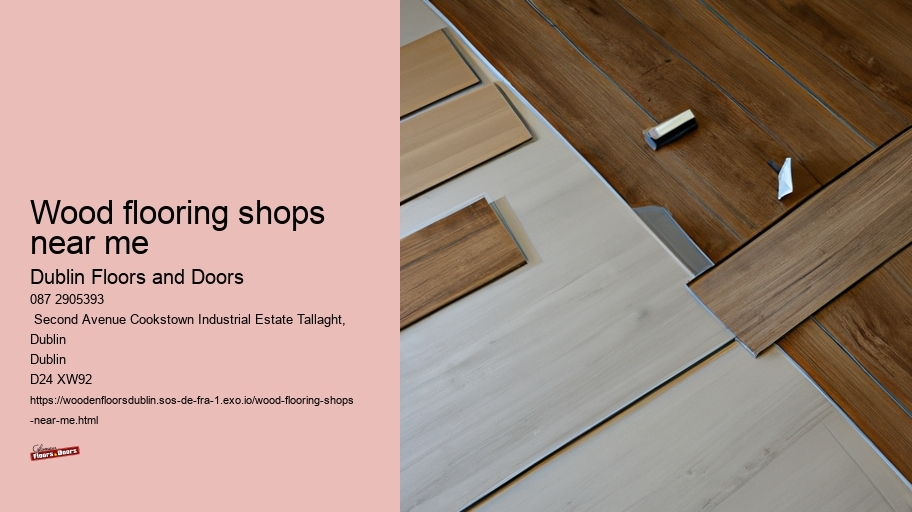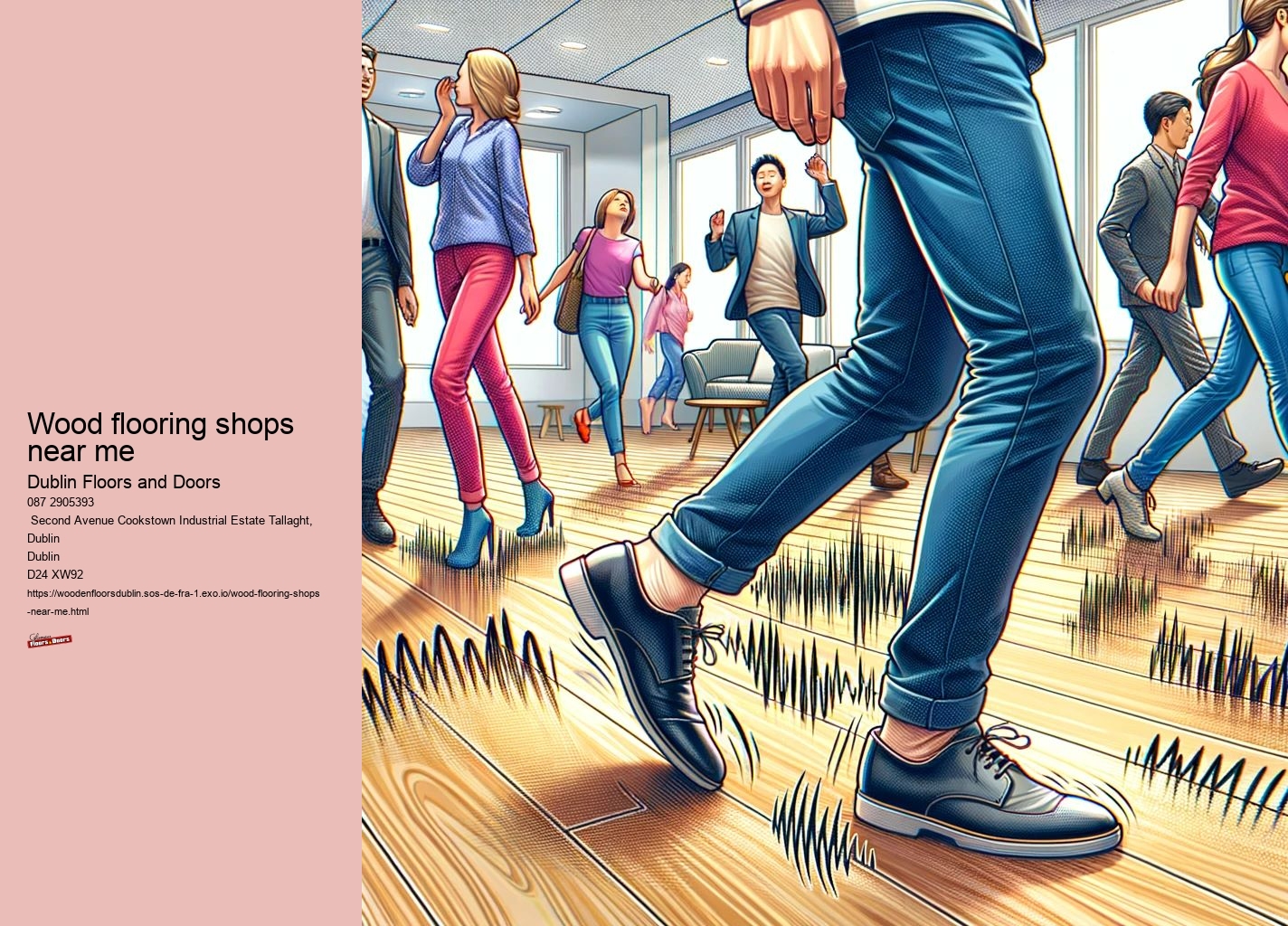

1.
• Avoid using a steam mop as it can damage the wood's finish.
• Clean spills promptly to prevent moisture damage and staining.
• Wood floors require refinishing every 3-5 years to keep them looking their best.
• Consider professional refinishing services for severe damage or wear.
1.
Laminate floors are composed of multiple layers that are fused together through a lamination process. Here's a breakdown of the typical layers found in laminate flooring:
1. **Wear Layer**: The top layer is a clear, protective coating made from aluminum oxide or melamine resin. This layer provides resistance to scratches, stains, and wear, ensuring the durability of the flooring.
2. **Decorative Layer**: Below the wear layer is a high-resolution photographic layer that mimics the appearance of natural materials such as wood, stone, or tile. This decorative layer gives laminate flooring its realistic look.
3. **Core Layer**: The core of laminate flooring is usually made from high-density fiberboard (HDF) or medium-density fiberboard (MDF). This layer provides stability, strength, and resistance to impacts and moisture.
4. **Backing Layer**: The bottom layer is a melamine resin layer that provides additional stability and moisture resistance. It also helps balance the floor to prevent warping.
### Composition Details:
- **Aluminum Oxide**: A compound used in the wear layer for its hardness and durability.
- **Melamine Resin**: A type of plastic used in the wear and backing layers for its strength and moisture resistance.
- **High-Density Fiberboard (HDF)**: A dense, engineered wood product made from wood fibers bonded with resin under heat and pressure.
- **Medium-Density Fiberboard (MDF)**: Similar to HDF but with a slightly lower density, used in some laminate cores.
### Key Characteristics:
- **Durability**: Laminate floors are highly durable and resistant to scratches, dents, and fading.
- **Affordability**: Typically more cost-effective than hardwood or stone flooring while offering similar aesthetics.
- **Easy Installation**: Often designed with click-lock or tongue-and-groove systems that make DIY installation straightforward.
- **Versatility**: Available in a wide range of styles and designs to match various decors.
- **Low Maintenance**: Easy to clean and maintain, requiring only regular sweeping and occasional damp mopping.
Laminate flooring is a popular choice for homeowners seeking the look of natural materials without the high cost or maintenance requirements.
Maintaining laminate floors involves regular cleaning and care to ensure their longevity and appearance. Here are some key steps and tips for maintaining laminate floors:
### Regular Cleaning
1. **Sweeping or Vacuuming**: Regularly sweep or vacuum your laminate floors to remove dust, dirt, and debris. Use a soft-bristle broom or a vacuum cleaner with a hard floor attachment to avoid scratching the surface.
2. **Damp Mopping**: Clean the floor with a damp mop (not wet) using water or a laminate floor cleaner. Avoid using excessive water as it can seep into the seams and cause damage. Wring out the mop thoroughly before using it on the floor.
### Spot Cleaning
3. **Spills and Stains**: Wipe up spills immediately with a dry or slightly damp cloth. For stubborn stains, use a mild cleaner specifically designed for laminate floors. Avoid abrasive cleaners, steel wool, or scouring pads as they can damage the surface.
4. **Streaks and Residue**: If you notice streaks or residue after mopping, buff the area with a dry microfiber cloth. Make sure to use a cleaner that doesn’t leave a residue.
### Protective Measures
5. **Furniture Pads**: Attach felt pads to the bottoms of furniture legs to prevent scratches when moving furniture. Avoid dragging heavy objects across the floor.
6. **Rugs and Mats**: Place rugs or mats at entryways to reduce the amount of dirt and moisture brought onto the floor. Use non-slip, non-rubber-backed mats to avoid any potential damage to the floor.
7. **Humidity Control**: Maintain consistent indoor humidity levels (between 35% and 65%) to prevent the laminate from expanding or contracting. Use a dehumidifier in humid climates and a humidifier in dry climates.
### Avoiding Damage
8. **High Heels and Pet Nails**: Avoid walking on laminate floors with high heels or cleats, as they can cause dents or scratches. Trim your pets' nails regularly to prevent them from scratching the floor.
9. **Sunlight Exposure**: Prolonged exposure to direct sunlight can cause the laminate to fade. Use curtains or blinds to limit direct sunlight or rearrange furniture periodically to ensure even exposure.
### Long-Term Care
10. **Refinishing**: Unlike hardwood floors, laminate floors cannot be refinished. If the floor gets damaged or worn out, you may need to replace the affected planks or consider a full replacement if necessary.
### Additional Tips
- **Avoid Wax or Polish**: Do not use wax, polish, or oil-based products on laminate floors as they can create a slippery surface and damage the finish.
- **Gentle Cleaners**: Use gentle cleaners that are pH neutral and specifically designed for laminate floors. Avoid using harsh chemicals like ammonia, bleach, or vinegar.
- **Professional Cleaning**: Consider professional cleaning periodically to keep your laminate floors in top condition.
By following these maintenance tips, you can keep your laminate floors looking clean and beautiful for many years.
Maintaining laminate floors involves regular cleaning and care to ensure their longevity and appearance. Here are some key steps and tips for maintaining laminate floors:
### Regular Cleaning
1. **Sweeping or Vacuuming**: Regularly sweep or vacuum your laminate floors to remove dust, dirt, and debris. Use a soft-bristle broom or a vacuum cleaner with a hard floor attachment to avoid scratching the surface.
2. **Damp Mopping**: Clean the floor with a damp mop (not wet) using water or a laminate floor cleaner. Avoid using excessive water as it can seep into the seams and cause damage. Wring out the mop thoroughly before using it on the floor.
### Spot Cleaning
3. **Spills and Stains**: Wipe up spills immediately with a dry or slightly damp cloth. For stubborn stains, use a mild cleaner specifically designed for laminate floors. Avoid abrasive cleaners, steel wool, or scouring pads as they can damage the surface.
4. **Streaks and Residue**: If you notice streaks or residue after mopping, buff the area with a dry microfiber cloth. Make sure to use a cleaner that doesn’t leave a residue.
### Protective Measures
5. **Furniture Pads**: Attach felt pads to the bottoms of furniture legs to prevent scratches when moving furniture. Avoid dragging heavy objects across the floor.
6. **Rugs and Mats**: Place rugs or mats at entryways to reduce the amount of dirt and moisture brought onto the floor. Use non-slip, non-rubber-backed mats to avoid any potential damage to the floor.
7. **Humidity Control**: Maintain consistent indoor humidity levels (between 35% and 65%) to prevent the laminate from expanding or contracting. Use a dehumidifier in humid climates and a humidifier in dry climates.
### Avoiding Damage
8. **High Heels and Pet Nails**: Avoid walking on laminate floors with high heels or cleats, as they can cause dents or scratches. Trim your pets' nails regularly to prevent them from scratching the floor.
9. **Sunlight Exposure**: Prolonged exposure to direct sunlight can cause the laminate to fade. Use curtains or blinds to limit direct sunlight or rearrange furniture periodically to ensure even exposure.
### Long-Term Care
10. **Refinishing**: Unlike hardwood floors, laminate floors cannot be refinished. If the floor gets damaged or worn out, you may need to replace the affected planks or consider a full replacement if necessary.
### Additional Tips
- **Avoid Wax or Polish**: Do not use wax, polish, or oil-based products on laminate floors as they can create a slippery surface and damage the finish.
- **Gentle Cleaners**: Use gentle cleaners that are pH neutral and specifically designed for laminate floors. Avoid using harsh chemicals like ammonia, bleach, or vinegar.
- **Professional Cleaning**: Consider professional cleaning periodically to keep your laminate floors in top condition.
By following these maintenance tips, you can keep your laminate floors looking clean and beautiful for many years.
Wooden floors can be environmentally friendly, but their impact depends on several factors such as the type of wood, the sourcing practices, and the manufacturing process. Here are key considerations to determine the environmental friendliness of wooden floors:
### Factors Affecting Environmental Friendliness
1. **Sustainable Sourcing**:
- **Certification**: Look for wood certified by organizations like the Forest Stewardship Council (FSC) or the Programme for the Endorsement of Forest Certification (PEFC). These certifications ensure the wood is harvested from sustainably managed forests.
- **Local Sourcing**: Choose wood sourced locally to reduce the carbon footprint associated with transportation.
2. **Type of Wood**:
- **Reclaimed Wood**: Using reclaimed or recycled wood reduces the need for new trees to be cut down and gives new life to materials that would otherwise be discarded.
- **Fast-Growing Species**: Opt for wood from fast-growing species like bamboo or cork, which regenerate more quickly than hardwoods like oak or maple.
3. **Manufacturing Process**:
- **Low-Emission Adhesives**: Choose wood products manufactured using low-emission adhesives and finishes to minimize the release of volatile organic compounds (VOCs) that can harm indoor air quality and the environment.
- **Energy-Efficient Production**: Support companies that use energy-efficient production methods and renewable energy sources in their manufacturing processes.
4. **Longevity and Durability**:
- **Durable Wood Types**: Select hardwood species known for their durability, which can last for decades and reduce the need for frequent replacement.
- **Proper Maintenance**: Properly maintaining wooden floors extends their lifespan, reducing the environmental impact associated with replacement and disposal.
5. **End-of-Life Considerations**:
- **Recyclability**: Wooden floors are biodegradable and can be recycled or repurposed at the end of their life cycle.
- **Disposal**: Unlike synthetic flooring materials, wood can decompose naturally, minimizing environmental harm.
### Benefits of Wooden Floors
- **Carbon Sequestration**: Trees absorb carbon dioxide as they grow, and this carbon remains stored in the wood throughout its lifespan.
- **Renewable Resource**: Wood is a renewable resource, especially when sourced from responsibly managed forests.
- **Biodegradability**: Wood is biodegradable, reducing waste and environmental pollution compared to non-biodegradable flooring materials.
### Potential Environmental Drawbacks
- **Deforestation**: Unsustainable logging practices can lead to deforestation, habitat destruction, and biodiversity loss.
- **Transport Emissions**: Transporting wood over long distances can result in significant carbon emissions.
- **Chemical Treatments**: Some wooden floors may be treated with chemicals that can harm the environment and human health.
### Making Environmentally Friendly Choices
To ensure your wooden floors are environmentally friendly, consider the following steps:
1. **Research Suppliers**: Choose suppliers committed to sustainable practices and transparent about their sourcing and manufacturing processes.
2. **Check Certifications**: Look for wood products with credible environmental certifications.
3. **Opt for Quality**: Invest in high-quality, durable wood flooring that will last longer and require less frequent replacement.
4. **Consider Alternatives**: Explore eco-friendly alternatives like bamboo, cork, or reclaimed wood, which can offer similar aesthetics with a lower environmental impact.
By making informed choices, you can enjoy the beauty and durability of wooden floors while minimizing their environmental impact.
• Regular maintenance is key to preserving the beauty of your wooden floors.
• Avoid excessive moisture and high heels on wood floors.
• Consult a professional for refinishing and repair needs.


• Implementing these practices will ensure your wooden floors remain in pristine condition for years to come.
Selecting the appropriate wood finish involves considering factors like wood type, durabil-ity, budget, ease of use, and your level of expertise to achieve the desired outcome for your project. Different woods accept finishes differently, with softwoods like pine poten-tially requiring a sealer before applying finish.
When choosing a finish, durability is crucial to resist wear and tear, so opt for one that can withstand scratches and damage. Budget plays a significant role, so select a finish that fits within your financial constraints.
Ease of use should also be taken into account; some finishes are easier to apply than others, depending on the application method and reapplication frequency.Lastly, con-sider your level of expertise to ensure the tools and methods you choose align with the desired finish quality for your wooden flooring project.
Considering your budget constraints, a cost-effective solution for your wood flooring pro-ject is to explore the various types and styles of wood flooring options available in the market. Here are some tips to help you find a cost-effective wood flooring solution:
1. Opt for Engineered Wood: Engineered wood flooring tends to be more affordable than solid wood while still providing a natural wood look.

2. Choose Plank Style: Stick to plank-style flooring as it's a common and cost-effective option compared to pricier styles like herringbone or chevron.
3. Consider Mid-range Grades: Select or natural grades offer a good balance between quality and price, making them a cost-effective choice.
4.
If you're looking for a diverse selection of laminate flooring options in Dublin, Dublin Floors and Doors have got you covered. With a wide range of choices including laminate, engineered, hardwood, and parquet floors, you can find the perfect fit for your space. For 15 years, Dublin Floors and Doors have specialized in providing top-quality laminate floor-ing supply and installation services to homes across Dublin.
The prices for laminate flooring in Dublin offered by Dublin Floors and Doors are budget-friendly, ranging from €7 to €30 per square yard. Quickstep floors, known for their patent-ed clicking system that enables easy installation, are stocked by the company. You also have the option to hire experienced installers for a seamless process.
Dublin Floors and Doors offer free on-site measurements to ensure accurate pricing for customers. Whether you prefer a supply-only service or a supply and fit service, Dublin Floors and Doors cater to all your laminate flooring needs with professionalism and ex-pertise.

The steps include preparing the subfloor, laying the underlayment, placing the wooden planks, securing them with nails or adhesive, and finishing with sanding and sealing.
Leave a small gap (typically 1/4 inch) around the perimeter of the room to allow for wood expansion. Use spacers during installation and cover the gap with baseboards.
Nail-down installation uses nails to secure the wood to the subfloor, while glue-down installation uses adhesive. Nail-down is typically used for solid wood, while glue-down is common for engineered wood.